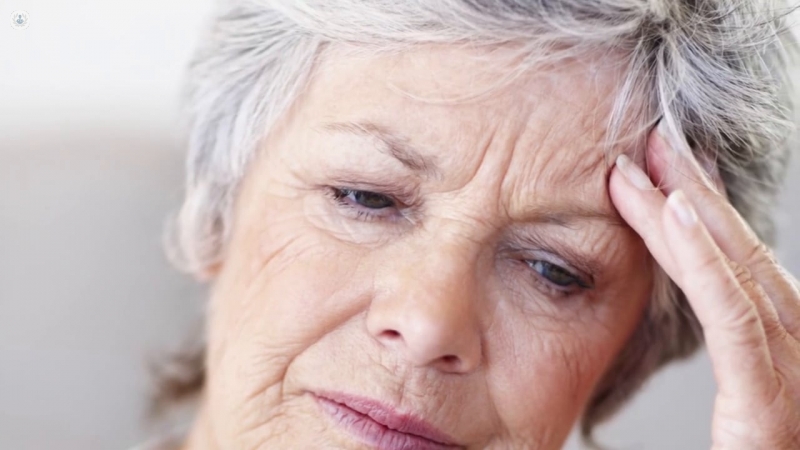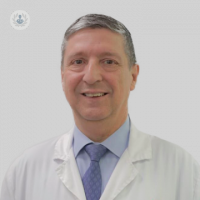Chronic pain, silent disease
Written by:Pain , being the most prevalent symptom and on which Medicine emerged at the dawn of human history, has not received the relevance that corresponded to it until the middle of the XX century. The first major advance in the treatment of acute pain was the discovery of Morton's anesthesia in the nineteenth century, which was a qualitative leap in the practice of surgery. The surgeon could intervene the patient without taking into account the time factor, and without hearing the patient's cries of pain during the procedure. Nowadays, a multitude of postoperative analgesia protocols have been developed, since acute pain, which is totally predictable, especially as far as procedures are concerned, must be completely controlled, not only with a view to achieving adequate patient comfort, also to prevent further development of Chronic Pain. An ill-treated acute pain leads to the chronification of pain by sensitization mechanisms at the central level.
But it was from the second half of the nineteenth century that the existence of chronic pain began to be considered, as the one that persisted beyond the cause that had triggered it. In this context stand out figures such as Bonica in the United States and Madrid Arias in Spain, who developed the first Pain Unit of our country.
What is chronic pain?
According to the International Association for the Study of Pain (IASP), chronic pain is defined as "an unpleasant sensory and emotional experience associated with potential or actual damage, or described in terms of such harm". In this definition chronic pain presents a physiological component, pain, and an emotional reaction to it, suffering. Therefore, pain is a symptom with an important subjective load involving factors such as the patient's previous experiences, socio-labor situation, personality, etc.. Suffering is a global negative feeling that affects the quality of life of the patient and which implies psychological aspects that must also be treated (negative coping attitudes towards pain, depressive mood, etc.).
The characteristics of chronic pain, according to the European Federation of Societies of Pain, including the Spanish Society of Pain (SED) are: duration longer than 3 months, moderate or severe intensity, which does not respond adequately to the usual treatment, and which implies a change in the lifestyle and personality of those who suffer from it. It has no protective function, unlike acute pain, and generates psychological responses such as depression.

What causes chronic pain?
The most frequent causes of chronic pain, potentially treatable in the Pain Unit are:
- Musculoskeletal pain : arthritis, osteoarthritis, cervical, dorsal or lumbar spinal processes, myofascial pain.
- Neuropathic pain : postherpetic neuralgia, diabetic painful neuropathy, complex regional pain syndrome, postoperative pain, phantom painful limb, radiculopathy, neuropathies.
- Mixed pain : lumbociatalgias, cervicobraquialgias.
The National Health Survey (2006) showed that 10% of people had reduced their usual activities due to some type of pain in the last two weeks, with the percentage of women in the shoulders being higher (12.4% and 6.4% respectively), while 3% had to stay in bed more than one day for pain, with the most frequent locations being the lumbar area and joints. Between 15% and 25% of adults suffer from chronic pain at any given time, increasing up to 50% in those over 65 years of age.
The results in the Spanish sample of the "Pain in Europe" study, the study with the largest sample of population so far, can be summarized as follows:
- Classified by age, 22% occurs between 41-50 years, 20% between 31 and 40 years and 19% between 51 and 60 years.
- 22% considered their pain intense and 18% unbearable
- The most frequent locations are the knee (27%) and the back (23%).
- The affected patients suffer pain on average 9.1 years.
- 22% required 5 to 10 years to achieve adequate pain control.
- Twenty-nine percent went to three or more doctors of different specialties.
The persistence of acute pain leads to the development of chronic pain, through mechanisms of neuronal plasticity at the level of the spinal cord and brain, in which the cause that causes the pain is no longer relevant and where it becomes in a disease by itself.
What is and can a Pain Unit do to chronic pain?
The Pain Treatment Unit has emerged to respond to chronic pain in all its dimensions: sensorial, emotional and cognitive, in order to alleviate the intensity of pain and the suffering associated with it. To do this, it integrates a human team consisting of doctors with specific training in pain (which integrates fields belonging to specialties such as Neurology, Rheumatology or Traumatology), as well as psychologists and nurses trained in treatments aimed at chronic pain. In addition, it has advisory staff in different medical disciplines in order to respond to the patient's demand for integrated and multidisciplinary care.
In the Unit of Pain apply minimally invasive interventional treatments, directed to the affected structures: joints, nerves, muscles; consisting of infiltrations, radiofrequency and neuromodulation techniques (stimulation of posterior cords of the spinal cord, peripheral nerves or ganglia, as well as infusion of drugs at the spinal level, connected to fully implantable programmable systems). These treatments, along with psychological therapy, try to restore the patient to an adequate level of activity and achieve an improvement in their quality of life.


